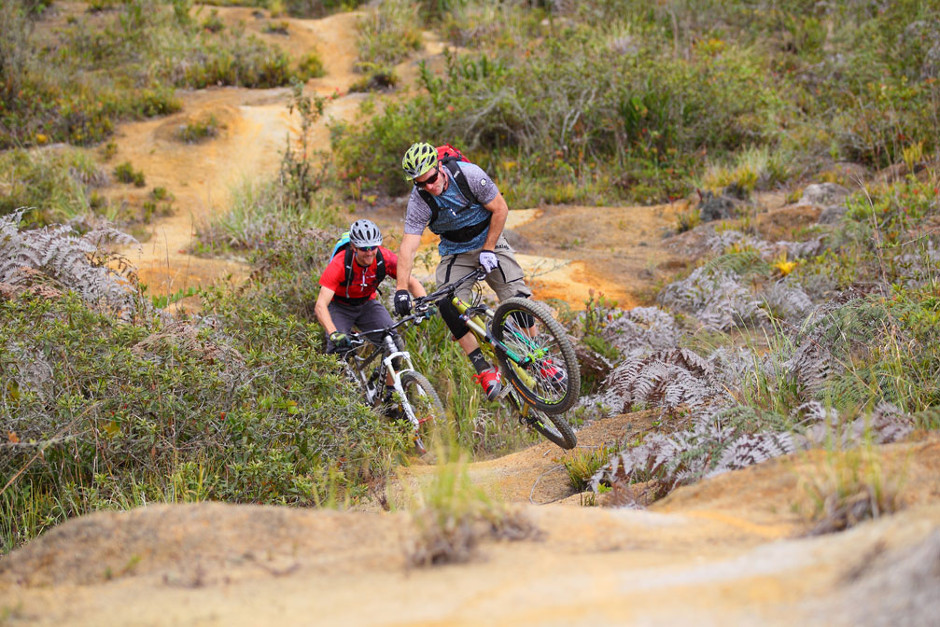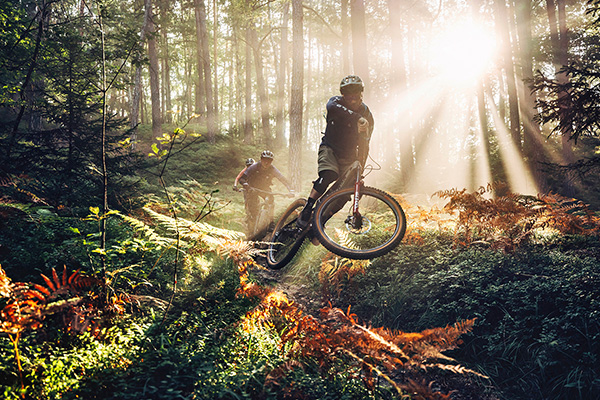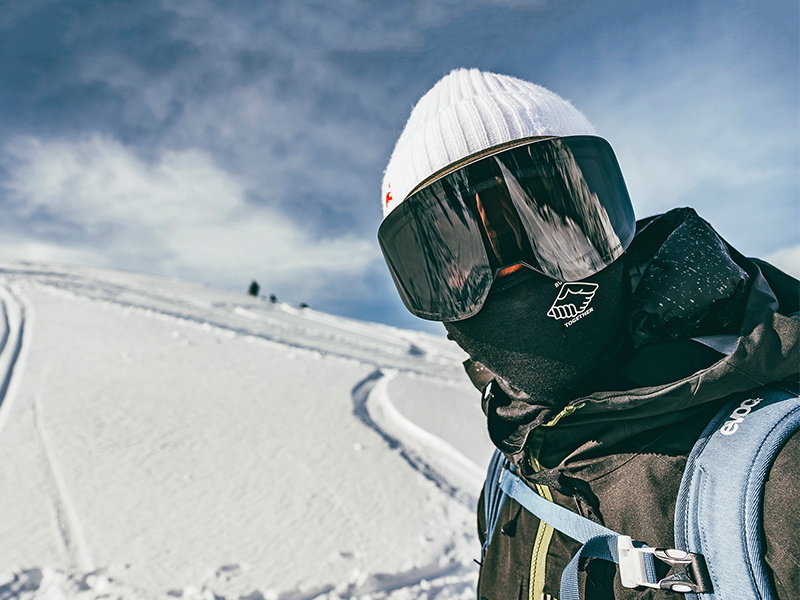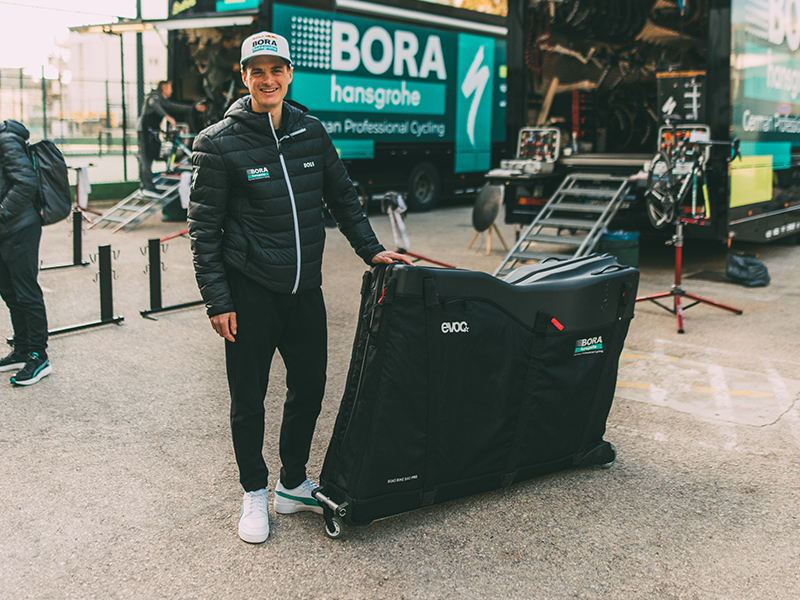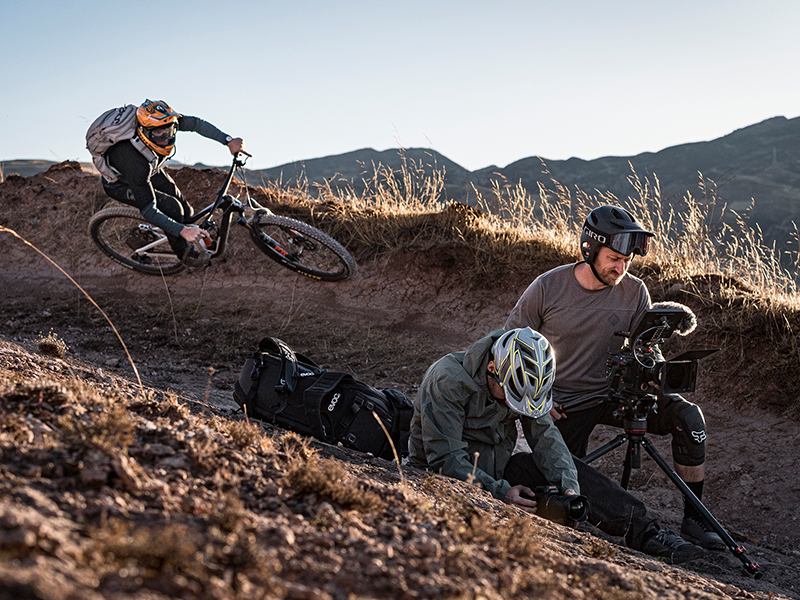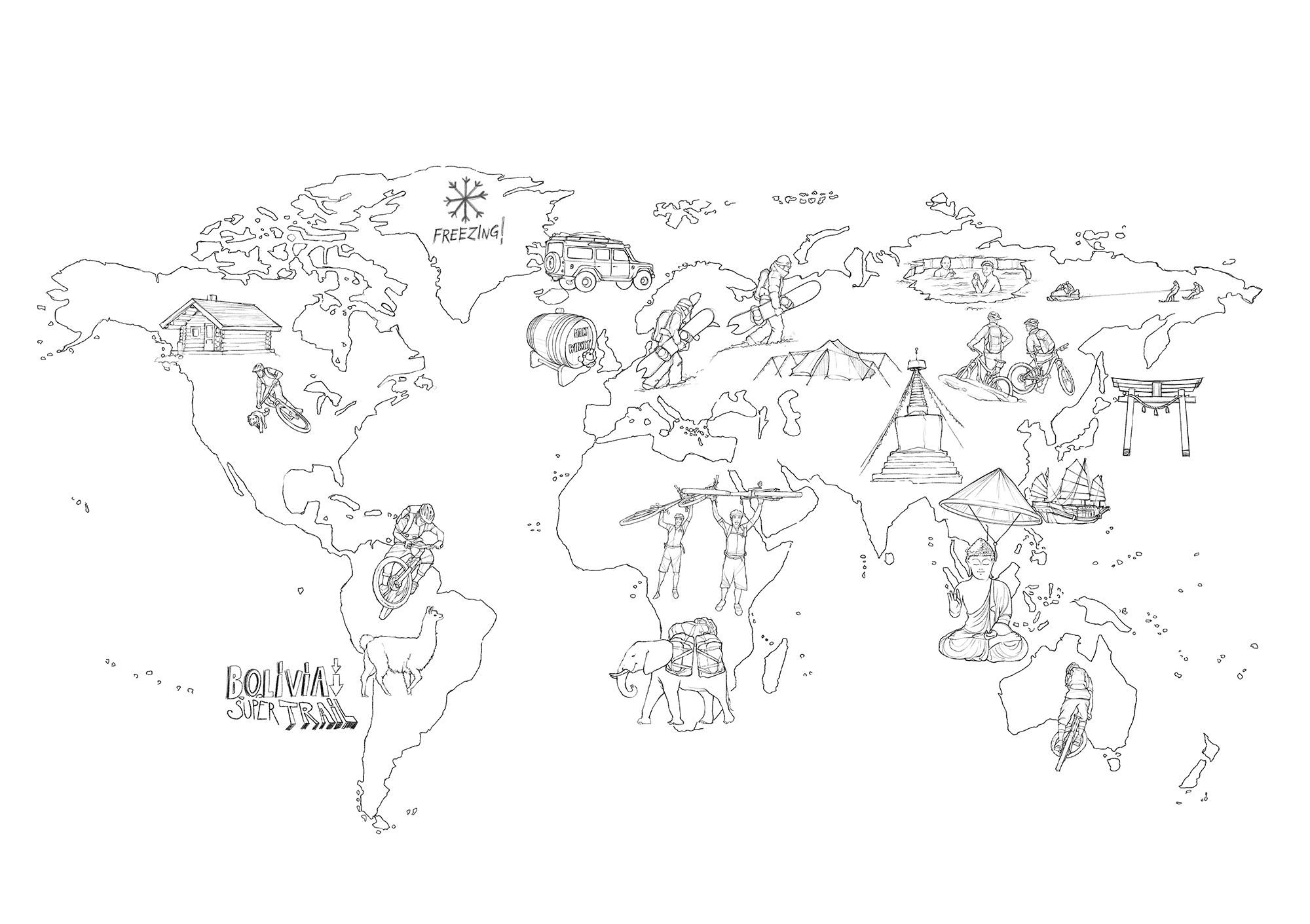ECUADOR
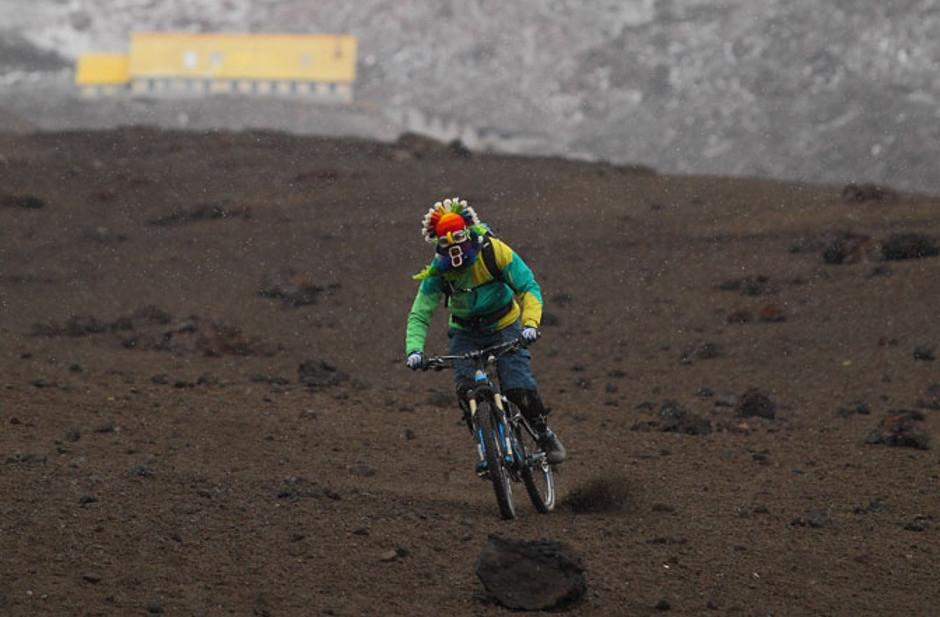
In 2013 we went to Ecuador wandering the back country for new trails. On a height of 4100m we rode perfect shaped downhills, which lead through a huge diversity of landscapes.
"Lack of oxygen" is the headline, right from our landing approach in Quito. This city lies at almost 3000 m above sea level and the air is already so thin that only pilots with a special license are capable of landing a jet here. That makes us gasp for breath for the first time before even setting foot into this beautiful country.
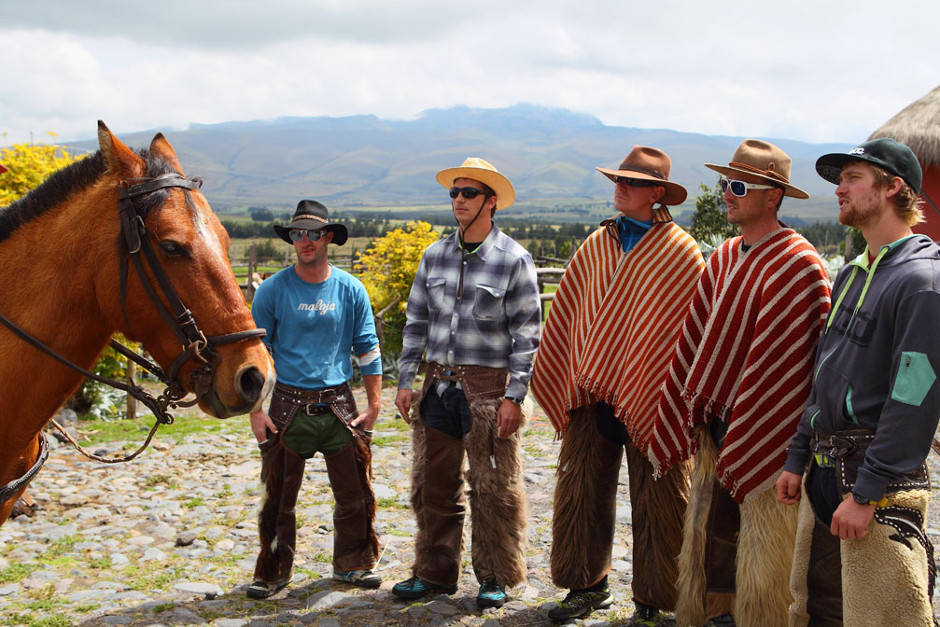
FROM HERE ON WE ARE ABSOLUTELY FORBIDDEN TO LEAVE THE TRACK, EVEN FOR A FEW CENTIMETRES
Thankfully, our guide takes pity on us, and we are lucky enough to start epictrail in the most relaxed way possible: with a cable car that takes us straight out of the city up to a height of 4100 m onto the slopes of the 4690 m high Pichincha volcano, the local mountain in Quito. Trail-wise, the bike community in Quito did a great job there. Starting directly from the mountain station a perfectly shaped singletrack with hundreds of berms, curves and jumps winds its way back down into the city with more than a thousand metres of altitude loss. As if on fast-forward we’re passing through a huge diversity of landscapes here. If it weren´t for the enthusiastic cheers in Spanish of our Ecuadorian friends congratulating our bike skills on this challenging descent, we could easily forget we were in South America right now.
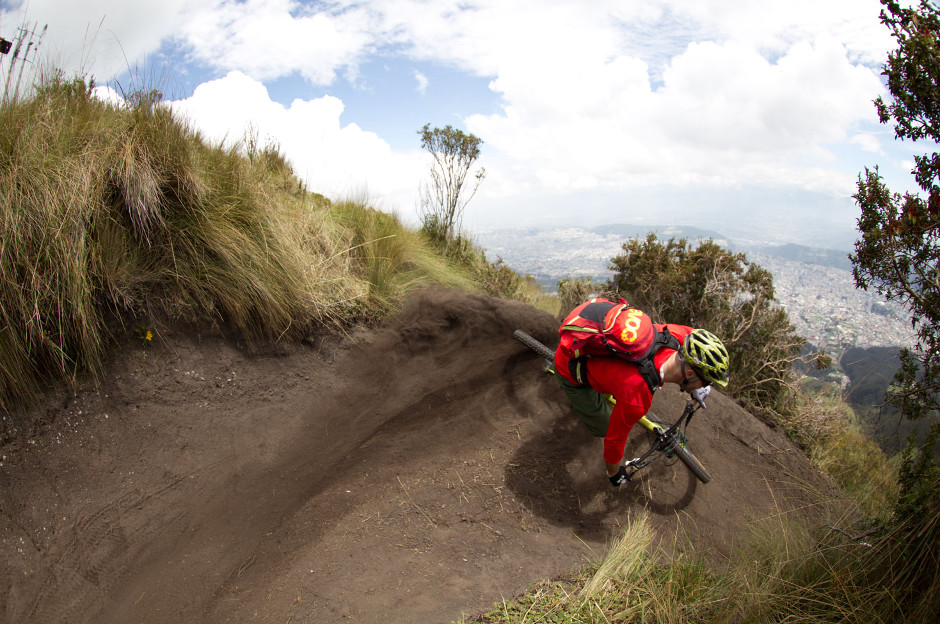
Near Ibarra is one of the driest regions in Ecuador, but has not at such extreme heights like the previous dasy. Instead we find ourselves riding through dusty desert landscapes so remote that we really have to keep an eye on our water supply. We saddle up at the side of the road in a small village, then roll on a little mud road onto an unimpressive ridge. After only a short time the terrain opens up into a vast canyon like you would expect to see on a postcard of an American national park.
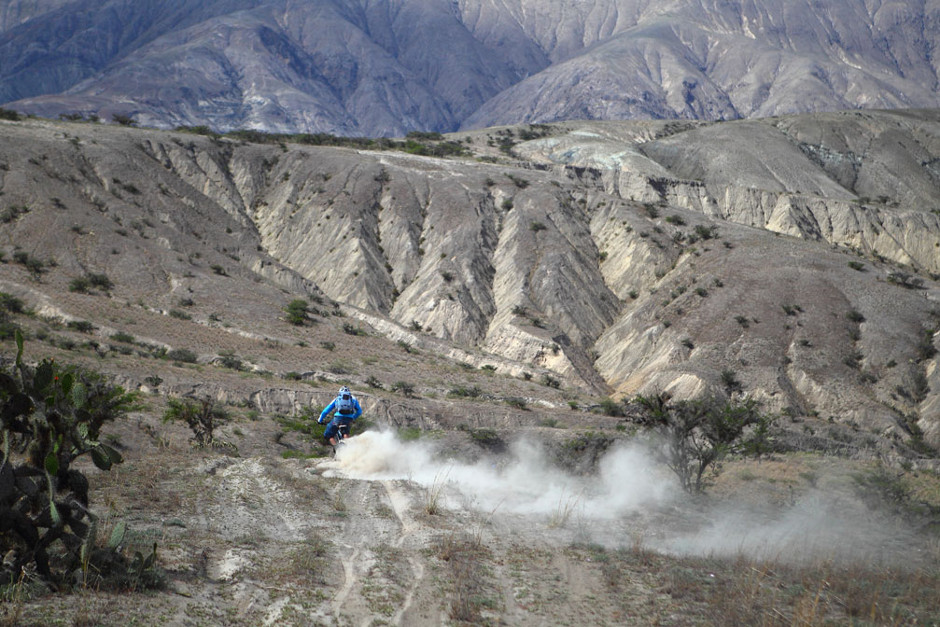
Right through the middle of it winds a small, dusty footpath that looks like it was purpose-built for mountain biking.
And this is exactly how it feels riding it. Constantly nosing slightly downhill, every bank and curve seems to be in exactly the right spot. We stop every now and then to comment on how amazing the trail is or to have a closer look at the immense landscape, which is getting dustier and drier all the time. Suddenly Jorge stops us with a firm hand gesture here on we must stay on the trail and we are absolutely forbidden to leave the track, even for a few centimetres. Now we’re in the land of the cacti. This sounds a bit strange to us but the expression on Jorge‘s face is serious and he doesn´t look like he is especially fond of these rare plants. Just minutes later Jorge’s fears become clear to us: a wild cry of pain sounds through the quiet desert air and spreads quickly like a wild fire through the whole group of riders. Before even realizing what is going on I feel some fierce sharp stabs at my knee and forearm. Kicked up by the rear wheel of the rider in front, a tennisball-sized cactus ball with finger long, white prickles stick in my right knee. Daniel has one sticking in his thigh and Max even in his chest.
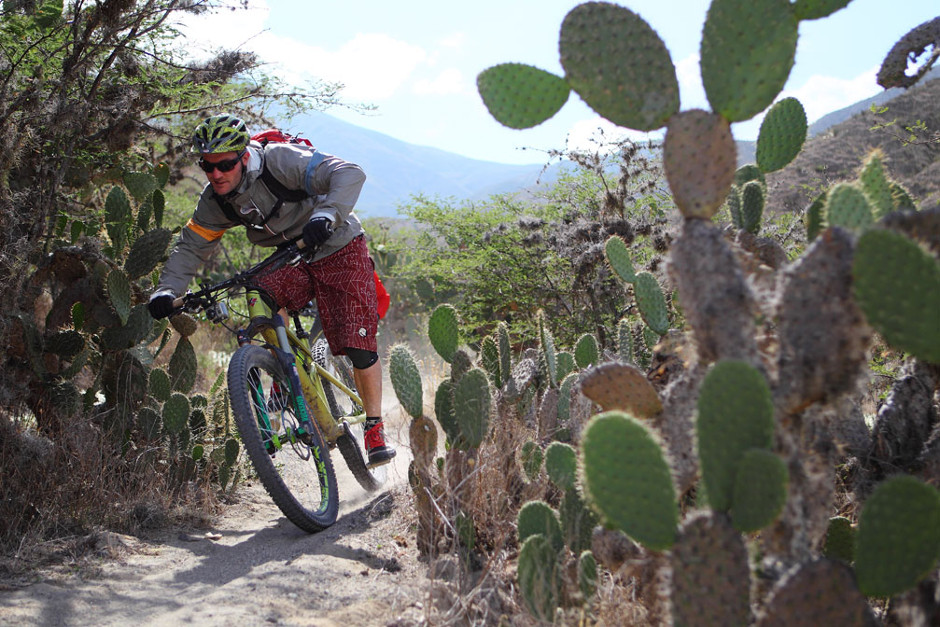
They are so pointy that they go through gloves like a hot knife through butter,embedding themselves deep into our flesh. In addition, the perfidiously sharp prickles seem to be equipped with barbs because it is almost impossible to drag them out of the skin again, and every attempt to pick them out turns into a comedy of passing the cactus ball from hand-to-hand.Despite the pain we are forced to wait until Jorge comes to help us out using two rocks as nippers. A couple of hours later, back at the country road with cold bottles of beer in our hands we’re already laughing about this crazy experience.
The highlight and great final of our journey we experience on Cotopaxi. With 5897m it is the second highest volcano in Ecuador. Looking-up “weather in Ecuador” in ourguidebook we find strange phrase, "vertical day-of-time climate” that we don’t really understand at first. But now we are learning the meaning of it - the hard way. The snowfall is so dense that we can hardly see and it is really cold. The strong wind deep-freezes our hands and feet in minutes.
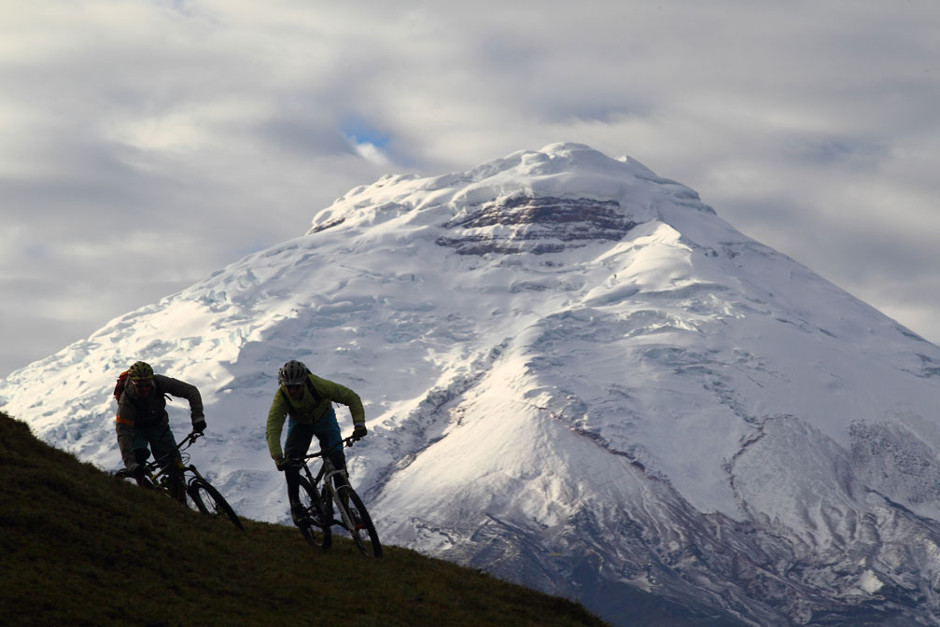
When I look over at my poorly-dressed travel companions in their tiny bike outfits, I realize that we need to get to a lower altitude as a matter of urgency. Nobody had a major blizzard on a volcano on his list - just a couple of kilometres away from the equator. Nevertheless we are here now. The prospect of riding down perfectly shaped lava slopes on a bike is simply too much to resist. Unfortunately, we can´t even see our hands in front of our faces...
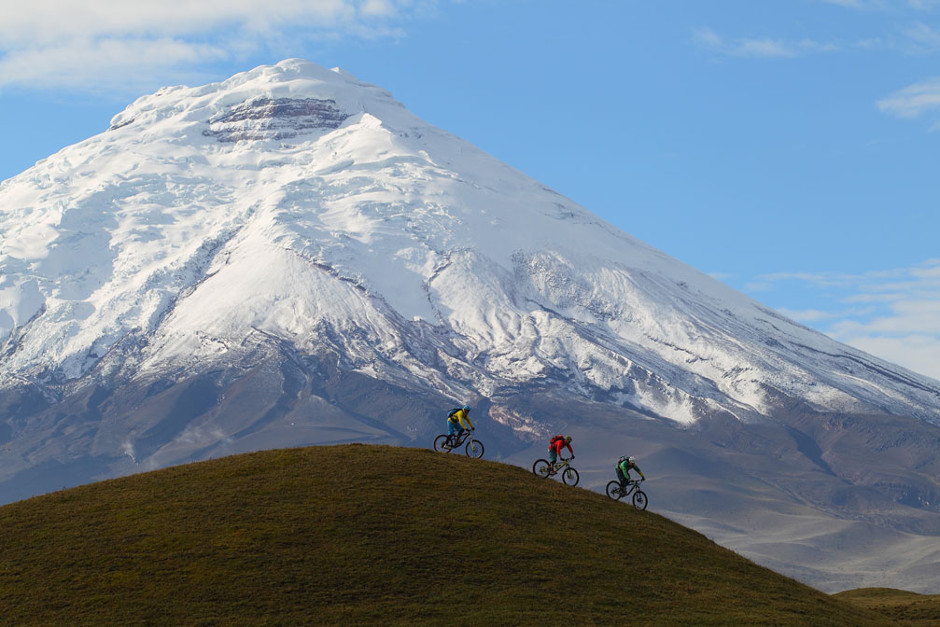
All of a sudden, the snow stops and the sun comes out. In minutes the thin snow layer has melted away and temperatures switch to springtime. The panorama is just breathtaking. Directly in front of our tyres the black, shimmering, vast slope of the volcano drops steeply down into the valley and bottoms out smoothly into lush green plateau. The ragged side moraine still traces the path of the enormous mudslide of the recent eruption only 150 years ago. What brought such devastation to this beautiful country shaped a perfect downhill piste for us into this mountainbike. At first we are hesitant about writing our bikes in this unfamiliar terrain. But after a few falls we quickly understand this new territory and start to speed up. Soon we discover a kind of “bike gliding” and a real freeride feeling that we’ve only experienced in winter sports before.
BEFORE EVEN REALISING WHAT IS GOING ON I FEEL SOME FIERCE SHARP STABS AT MY KNEE AND FOREARM
The trick is to sit very loose on your bike and steer with the whole body and avoid strong braking and abrupt manoeuvres at all costs. The slopes have such gigantic run-outs that we can go at full speed. Further down the mountain it flattens out and gets more and more rocky and we start to follow a faint path winding through the first section of grass. A few surprising ledges demand some more riding skills before we enter a dry riverbed that invites us to play around on its smoothly polished rock formations – just like in a natural bike park. We are back down at “only” 3600m now, and breathing has become much easier again.
